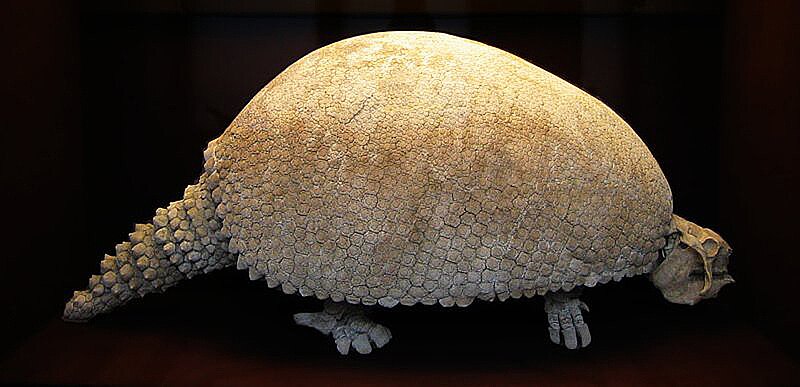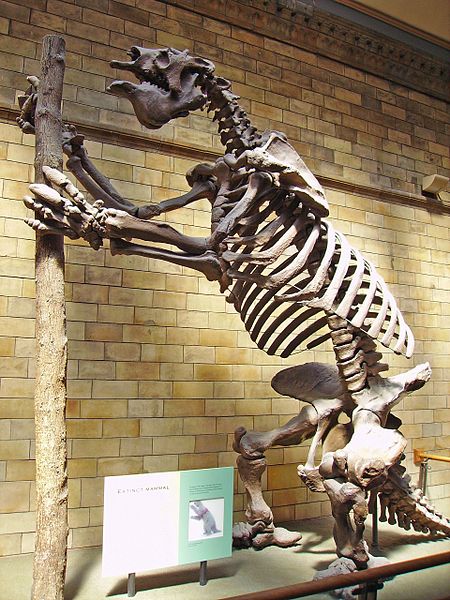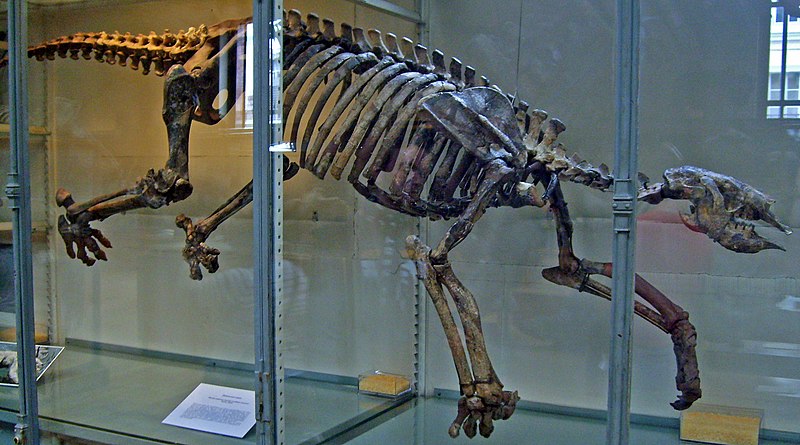Listen to Episode 24 on PodBean, Spotify, YouTube, or that other place you get podcasts!
Our most recent episode is worth taking your time with because it deals with many people’s favorite slow-mo animals: sloths! We take a look at the modern and fossil representatives of this weird group.
In the news
Pterosaur Eggs
Hundreds of pterosaur eggs have been unearthed at a fossil site in China. Some even hold fossil embryos that give us clues about the early life and parenthood of these pterosaurs. [Link]
Swan-Shaped Dinosaur
An oddly-proportioned dinosaur found in Mongolia has features that seem to suggest it may have not only eaten fish but actually swam after them. [Link]
Paleontologists are Suing the President
The Society of Vertebrate Paleontology, along with several other organizations, are planning to sue the US Presidential administration over the decision to downsize two national monuments in Utah. More info here and here.
Ancient Marine Reptile Ears
A study of the inner ear structures of Mesozoic marine reptiles found that they shared surprisingly similar shapes with certain modern marine animals. [Link]
What is a Sloth?
Modern sloths come in two varieties: the toe-toed Choloepus, or the three-toed Bradypus. Their modern diversity only consists of six species, all of which are found in the forests of South America. These peculiar animals stand out from most mammals in a number of their physical features, such as being the only mammals (along with the manatee) to not have exactly seven cervical (neck) vertebrae. They also have amazingly slow metabolisms, allowing their internal temperatures to fluctuate more than most mammals.

Sloths are members of the clade Xenarthra, alongside armadillos and anteaters. Xenarthra means “strange joints” in reference to the unique attachments on their vertebrae. Members of this groups also very commonly have large claws on their forelimbs and unusually-shaped hip bones.

One very interesting group of fossil xenarthrans are the giant armored glyptodonts of North and South America. These tank-like animals survived up until very recent times, even living alongside – and being hunted by – our ancestors.

Ground Sloths
Before the last major period of glaciation, sloths had a much wider diversity and lived in a larger range of habitats. In the past most sloths were ground-dwelling herbivores that ranged from human-sized or smaller all the way to the size of a small elephant. Like their other xenarthran cousins, most of their history took place in South America, though many moved into North America later.

Megalonychidae
These were some of the first sloths to make it to North America. This is notable because their arrival predated the presence of the Isthmus of Panama that would later connect the two Americas. This suggests that they may have swum or rafted from island to island – a phenomenon called “island-hopping.”

Megatheriidae
This family included the largest species of sloths that were also some of the biggest land mammals to ever have walked the earth. Megatherium reached 20 feet long and is estimated to have weighed over four tons. The only animals in its environment that outweighed it were proboscideans (elephants and kin).

Nothrotheriidae
Among this family of mostly smaller sloths was the genus Thalassocnus, which appeared to have been uniquely adapted to an aquatic lifestyle. Fossils of Thalassocnus are found among the same layers as marine organisms and their physical features would have supported a life in the water.

Mylodontidae
With wide, flat claws and very robust forearms, these ground sloths appear to have been prominent burrowers, and are likely to have left behind the mysterious ancient tunnels discovered throughout South America.
These sloths are also notable because many of the mylodontids possessed osteoderms – pieces of bone that grew within the skin as a form of armor. These have even been found in mummified sloth skin from cave sites.

And to round things out, since we promised we’d put it in the blog post, here’s a video of a very content sloth feeding itself carrots
If you’d like to learn more, feel free to follow these links:
The Anatomy of Sloths
Sloth’s Evolutionary Secret
—
If you enjoyed this topic and want more like it, check out these related episodes:
- Episode 74 – South America
- Episode 43 – The Great American Biotic Interchange (GABI)
- Episode 25 – The Pleistocene Megafaunal Extinction
We also invite you to follow us on Twitter, Facebook, or Instagram, buy merch at our Zazzle store, join our Discord server, or consider supporting us with a one-time PayPal donation or on Patreon to get bonus recordings and other goodies!
Please feel free to contact us with comments, questions, or topic suggestions, and to rate and review us on iTunes!
Your photo of Megaloynx is actually Paramylodon. It is horribly mislabeled at that museum. A fact I made a bit of to do about during SVP in Salt Lake City.
LikeLike
Thank you for catching that and letting us know. You’re definitely right and we’ve updated the photo.
LikeLike
Glad to help. Sloths are kinda my thing, so looking forward to listening to this episode. Have overall heard good things about your podcasts!
LikeLike
Thanks again! Hope you enjoy and approve!
LikeLike